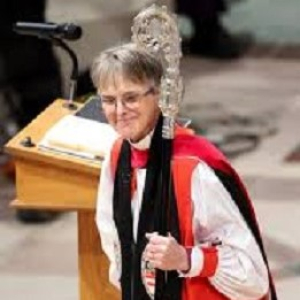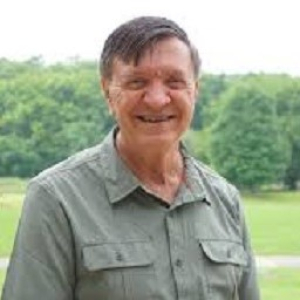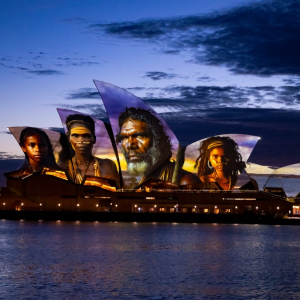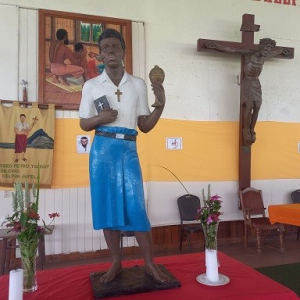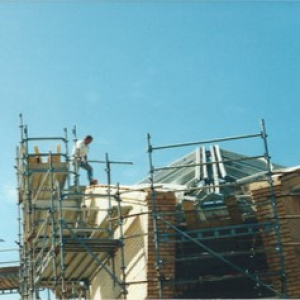Peter MALONE
Gospel Values in the Trump era. Letter from Claude Mostowik MSC
Gospel Values in the Trump era. Letter from Claude Mostowik MSC
Dear Right Rev. Bishop Mariann Edgar Budde,
I write to you on behalf of the Missionaries of the Sacred Heart Justice and Peace Centre and Pax Christi Australia to thank you for the very dignified prophetic voice to speak truth to power during the National Cathedral's Service of Prayer for the Nation in Washington on Tuesday January 21.
Your pleas to President Trump for mercy, kindness, and justice on behalf LGBTIQ+ people, people who are immigrants and many other marginalised people in your country was a powerful expression of the commandment to love one another - our neighbours - as we love ourselves.
As your country honoured the legacy of Dr Martin Luther King Jr on the same day it was an urgent reminder to the people of the United States and others beyond your country that silence in the face of violence and all forms of injustice is a failure to be people of hope - a hope that can only be created by action. When Dr King asserted that we need a heart full of grace in order serve, that grace was displayed in your pleadings at the Cathedral. Such grace is exceedingly rare in the public sphere.
As we thank you and express our appreciation, we are also mindful that many church and religious leaders have been silent as a genocide has unfolded, and have been silent against marginalised people in many places.
We hope that those who do raise their voices will continue to do so with courage.
Once again, a heartfelt appreciation and thanks.
Claude Mostowik msc
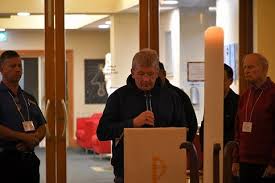
--
Fr. Claude Mostowik msc
Missionaries of the Sacred Heart Justice and Peace Centre
Pax Christi Australia
PO Box 146
Erskineville, NSW 2043
Mob: 0411450953
Ph: +61 2 8762 4224
I acknowledge the traditional custodians of the land on which I live and work, and pay my respects to Elders past and present.

MSC worldwide: New MSC Leadership Appointments for California and Pennsylvania 2025
MSC worldwide: New MSC Leadership Appointments for California and Pennsylvania 2025
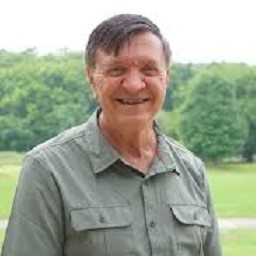
Jim Miller MSC
A sign of the times, some of the provinces ageing, many growing – and collaboration between provinces. Here is a US province example.
After individual conversations with members in CA and PA, and confirmation from the Provincial Council, Fr. Michael Miller, MSC Provincial, appointed
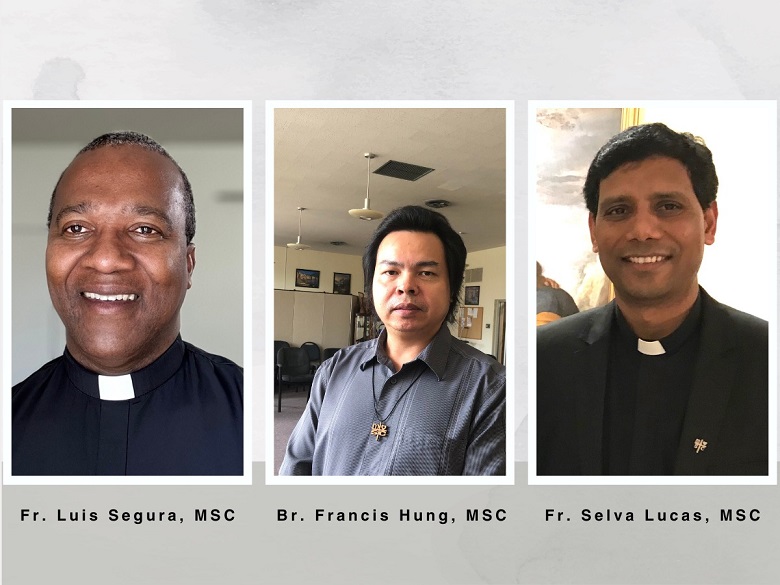
Fr. Luis Segura the new Superior in the MSC California Community. He replaces Fr. John Kavcak, MSC.
Fr. Selva Lucas to Superior who will serve the local community in Pennsylvania replacing Brother Jim Miller, MSC. Both Fr. Kavcak and Br. Miller served their communities as Superior for 6 years.
In addition to the newly appointed Superiors, Brother Francis Hung will serve as the House Manager overseeing the day-to-day activities at the Sacred Heart Villa in Center Valley, PA.
Each will serve for a 3-year term beginning January 1, 2025. Congratulations to all of them!
Chris Chaplin: Congratulations to the new leaders and sincere thanks Jim and John for your years of service of our confrères in Pennsylvania and California.
Congratulations, Frank Dineen MSC, Golden Jubilee of Ordination, January 25th, 2025,
Congratulations, Frank Dineen MSC, Golden Jubilee of Ordination, January 25th, 2025
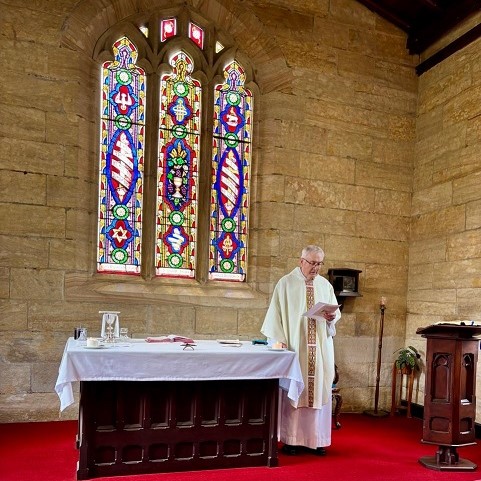
Thanks for John Walker MSC for photos.
While the poster says Profession, this is the Golden Jubilee of Ordination - Frank made his first porfession on January 15th 1972
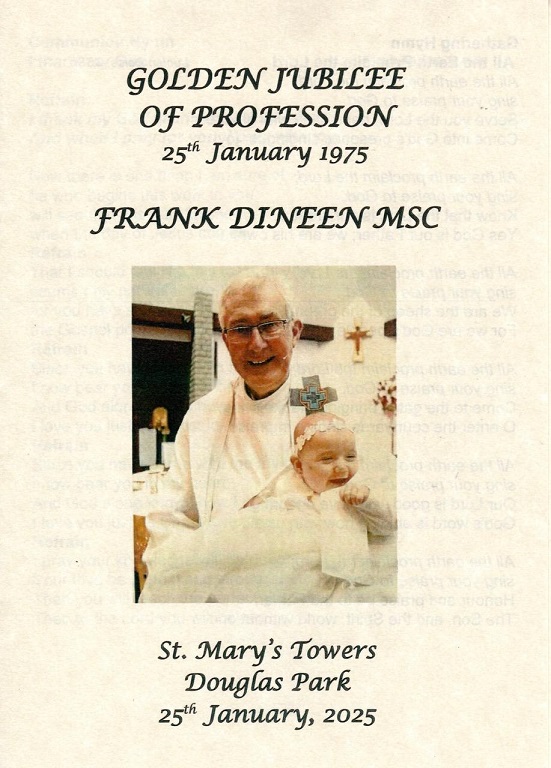
Frank celebrated with his community at Douglas Park.
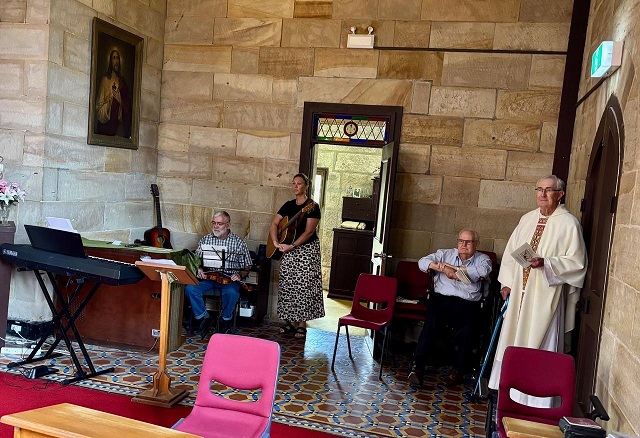
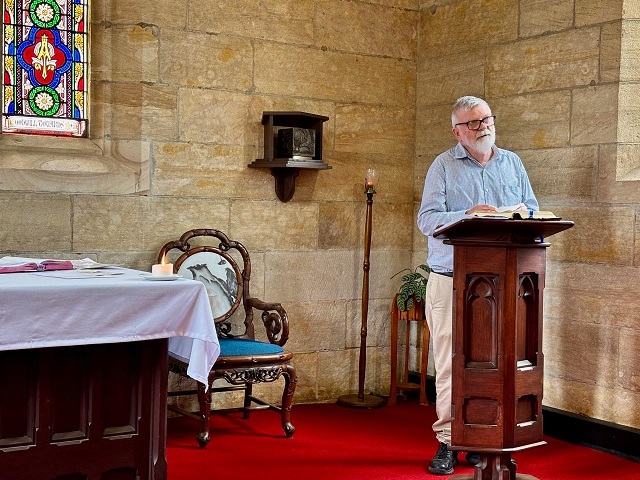
Gerard McCormick MSC, Community Leader.
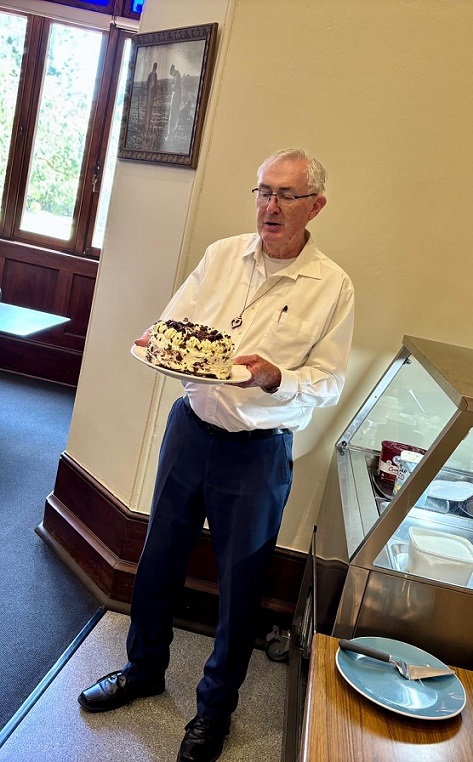
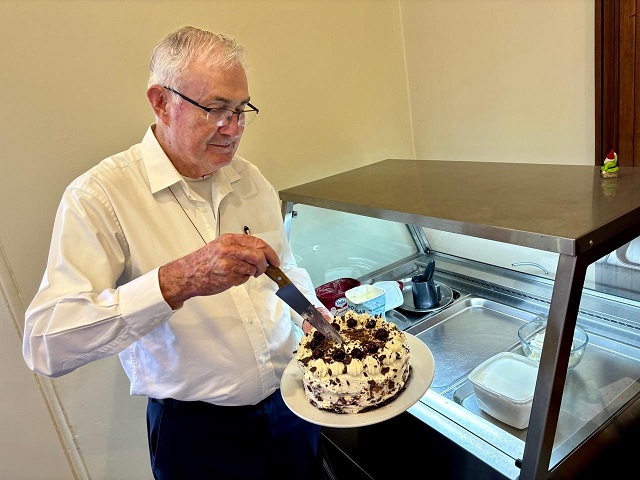
And, sad news that Frank’s oldest brother, John, died this week. Our sympathy to Frank and the Dineen family.
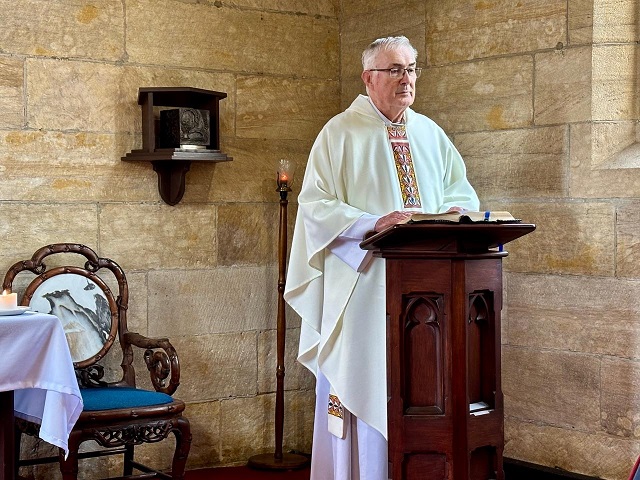
What is Australia Day?
What is Australia Day?

Recent polls indicate that the Australian public is more and more wanting January 26th as Australia Day – in the aftermath of the failed referendum of 2023.

So, the question: what is Australia Day: celebrating the landing at Sydney Cove and Governor Phillip taking possession of the land?.
Celebrating national spirit?

Indigenous peoples see 26th January 1788 as a Day of Invasion. Governor Philip raised the British flag and took possession of the land as a British colony. Possession – Dispossession. January 25th 1788 was the last day of indigenous ownership of this land.
Bishops endorse Uluru Statement from the Heart/ Endorsement by the Plenary Synod.

Australia’s Catholic bishops, on the recommendation of their key Aboriginal and Torres Strait Islander advisers, have endorsed the Uluru Statement from the Heart.
The bishops’ consideration of the matter was informed by the words of St John Paul II, who in a visit to Alice Springs in 1986 said to Aboriginal and Torres Strait Islander peoples: “Your culture, which shows the lasting genius and dignity of your race, must not be allowed to disappear… Your songs, your stories, your paintings, your dances, your languages, must never be lost.”

Our 2023 Provincial Council affirmed the Uluru Statement.
30th Anniversary of the Beatification of Peter to Rot, 17th January 1995
30th Anniversary of the Beatification of Peter to Rot, 17th January 1995

On the occasion of this anniversary, Archbishop Rochus Tatamai MSC of Rabaul, himself a relative, posted these pictures of paintings and stained glass of Peter To Rot.
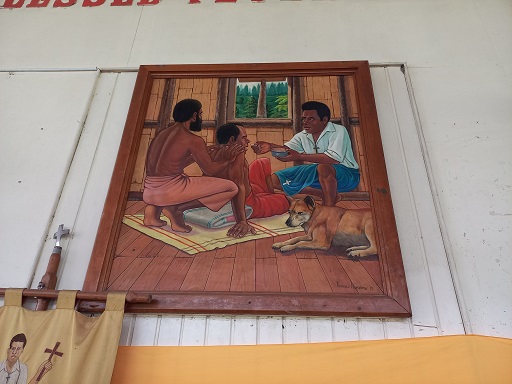
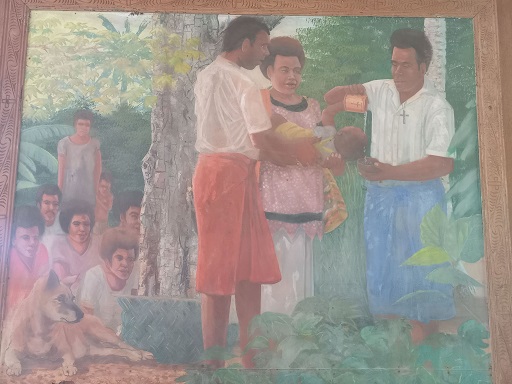
From Pope John Paul II’s Homily, SirJohn Guise Stadium on the day:
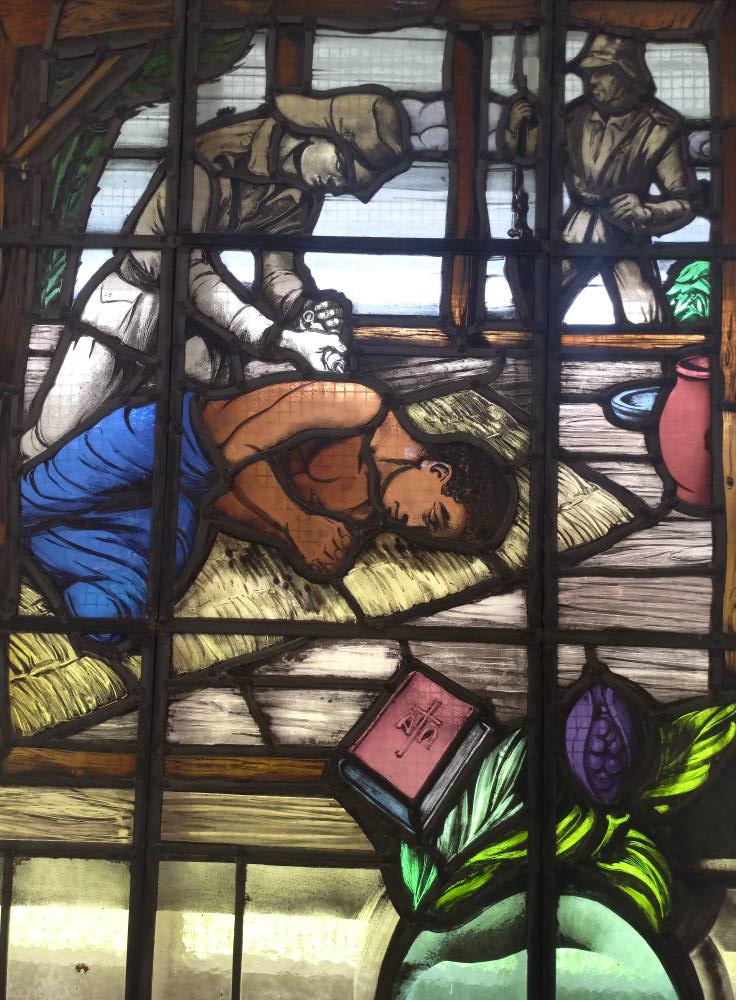
On the day of his death, Blessed Peter asked his wife to bring him his catechist’s crucifix. It accompanied him to the end. Condemned without trial, he suffered his martyrdom calmly. Following in the footsteps of his Master, the "Lamb of God who takes away the sin of the world" (Jn.1: 29), he too was "led like a lamb to the slaughter" (Cf. Is. 53: 7).
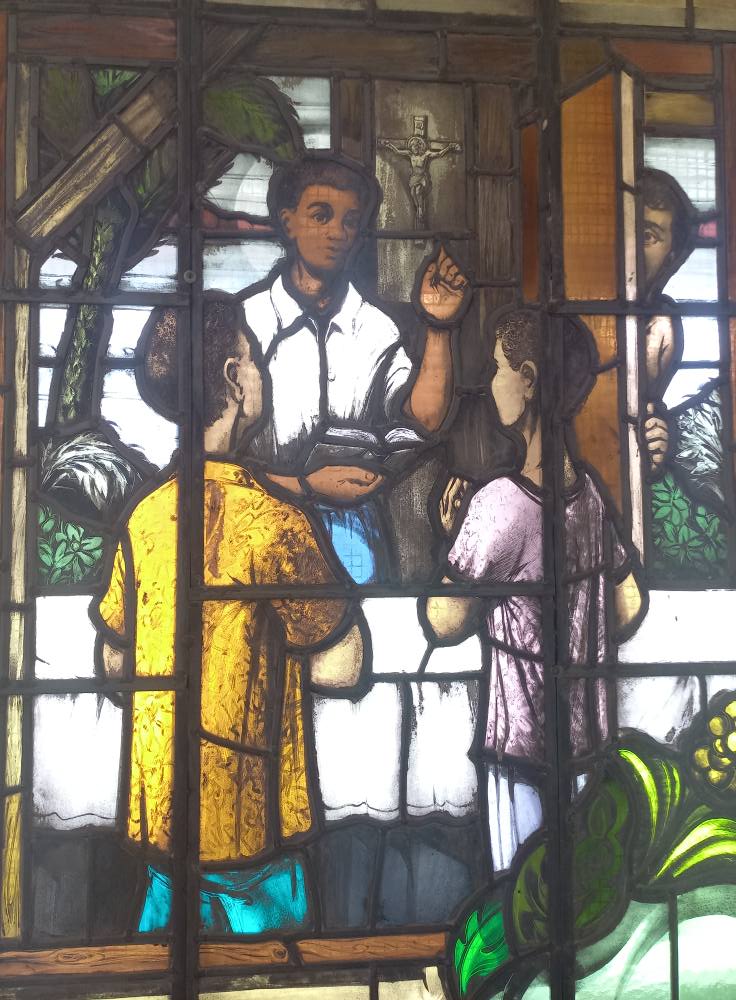
And yet this "grain of wheat" which fell silently into the earth (Cf. Jn. 12: 24) has produced a harvest of blessings for the Church in Papua New Guinea!
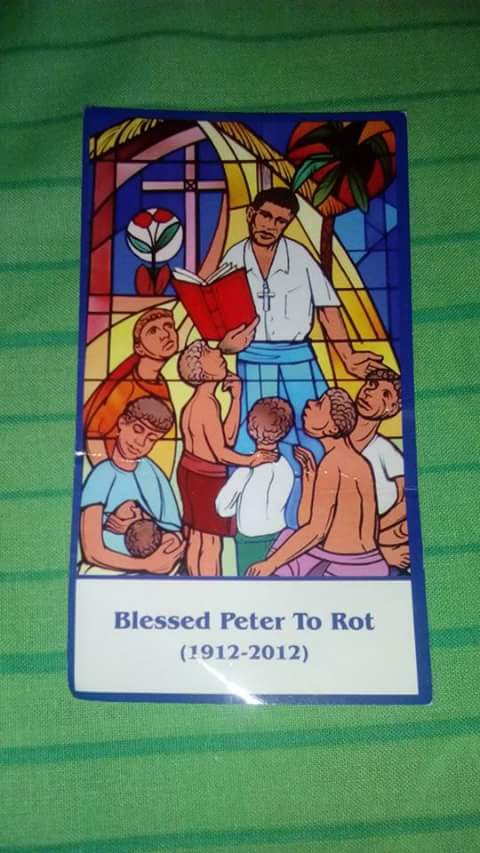
Chris Murphy MSC, Requiem Mass and Burial
Chris Murphy MSC, Requiem Mass and Burial
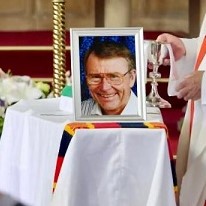
The Requiem Mass for Chris was celebrated at Our Lady of the Rosary, Kensington, where he served as parish priest.
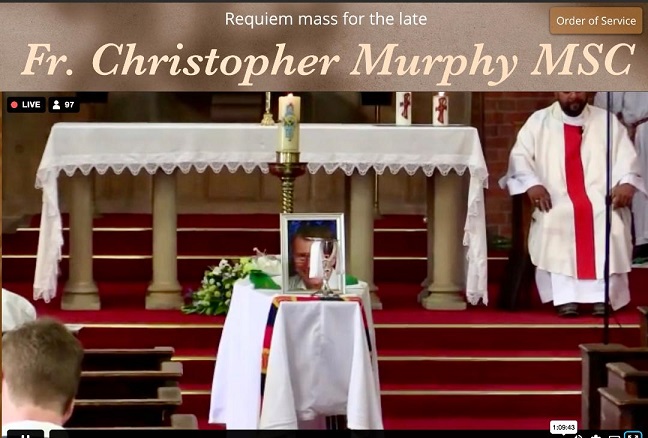
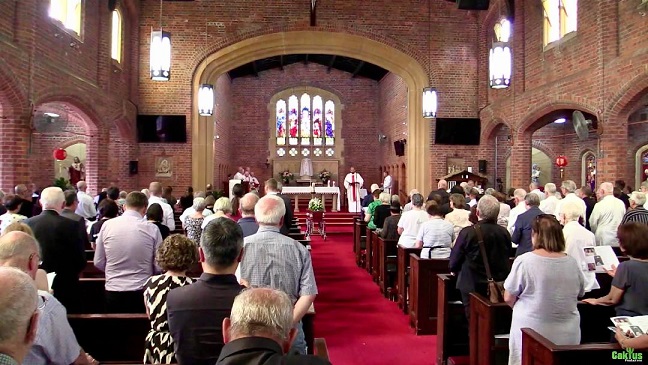
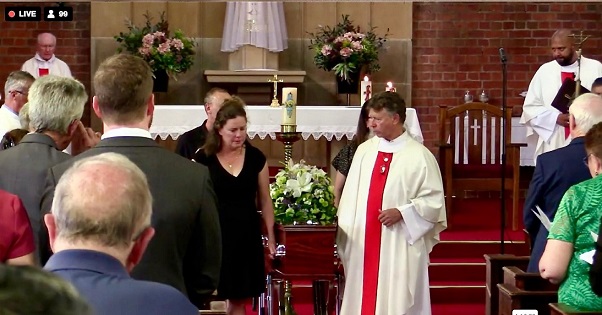
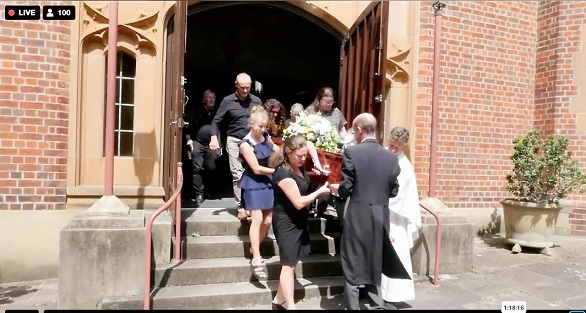
Burial at St Mary’s Towers,
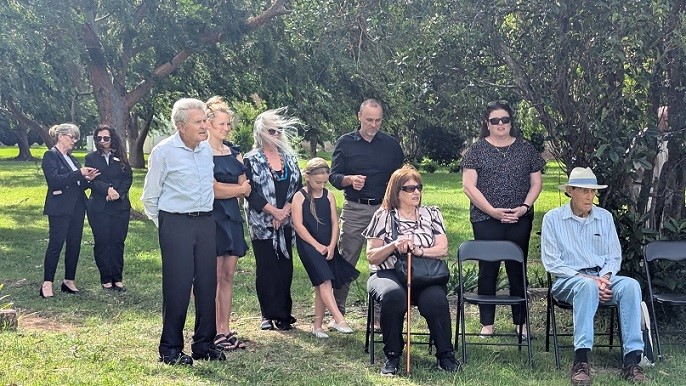
Family

Community and visitors

Fr Gerard McCormick MSC, Community Leader, officiating at the graveside
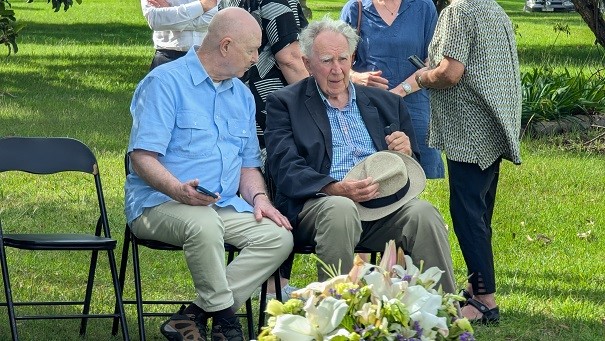
Those attending included former confrere, Paul Collins
Thanks to John Walker MSC and Kimi Vunivesilevu MSC for the photos
From MSC Chapel to Sacred Heart Parish Church, Croydon.
From MSC Chapel to Sacred Heart Parish Church, Croydon.
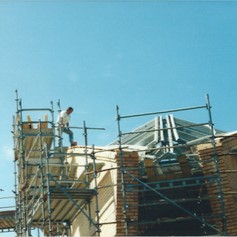
With thanks to Clive Mc Arthur for sending these photos taken during the building of the Church in 2000.
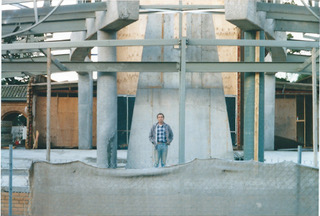
The last MSC students at Croydon moved at the beginning of 1986 to Drummoyne, Navarre House. The Monastery was sold to the Archdiocese of Melbourne in 1991.
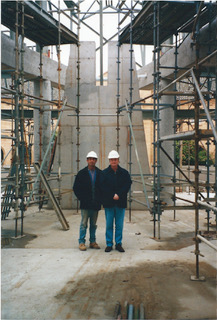
The parish church of St Edmund’s in Hewish Rd gave way to the new parish centre at the Monastery. The primary school opened on the Murray Rd side of the building leading to the cemetery.
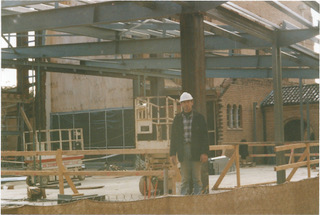
At the end of the 1990s, the decision was made to knock down the chapel apse and extend the building into the courtyard – which worked well for both church and courtyard.

Bob Irwin was provincial at the time and sent this photo and the note: the builders of the church: Peter McArthur, from Murray Rd , opposite the monastery…good friend to me and a number of ex scholastics.. I believe their initials are scratched onto the back of the plaque.
Brutalist, The
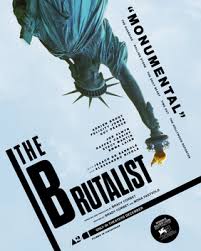
THE BRUTALIST
US, 2024, 215 minutes, Colour.
Adrien Brody, Felicity Jones, Guy Pearce, Joe Alwyn, Raffey Cassidy, Stacy Martin, Isaach de Bakole, Alessandro Nivola, Michael Epp, Emma Laird, Jonathan Hyde, Peter Polycarpou.
Directed by Brady Corbet.
The Brutalist is a vast film in scope and length. Beginning with an Overture, it becomes cinematic orchestral and in its two acts and epilogue cinematic operatic.
The screenplay is by former child actor, Brady Corbett, who directed Childhood of a Leader, Fox Looks, working with his partner, Mona. The scope of the storytelling is quite complex. It is multi-themed, beginning with Nazi persecution of the Jews, business close-up in the oppressive dark, concentration camp consequences. It then moves to re-settlement in the US and good use of the Statue of Liberty, Ellis Island, speeches and translations, then out into the vastness of America, a brother. In New York, then a train to Philadelphia.
Throughout the film there is a documentary evidence, radio news commentaries, about the significance of Pennsylvania in the history of the US.
The central character, Laszlo, is an architectural genius, and in prewar Germany, found unacceptable to national socialism, interned, along with his wife and niece. For most of the film, there is voice-over of letters from his wife, still in Europe.
This is the post-war USA, American business, migrants making good, shrewd businessman with no family backgrounds highly successful.
This is the story of Laszlo’s rise, not without its many pitfalls and falls. At first working with his cousin, Alessandra Mueller, participating in the commission from the son of a millionaire, Harry Van Buren is in (Joe all one) elevate his father, Harrison Van Buren’s personal library. Progress is made, Laszlo’s skill in design, his fine eye for detail, his modern furniture style, making a great impact until suddenly, Harrison bursts angrily onto the scene and dismisses everyone. Harrison is played by guy Pearce most convincingly.
But the central performances that of Adrien Brody (who won an Oscar for the pianist in 2002). He is sympathetic, sometimes upsetting, many outbursts, a growing sense of his own worth, his reaction to being challenged.
The film echoes the American confidence of the 1950s, progress and peace, buildings and achievement, the plans for building Harrison Van Buren’s community Centre in honour of his mother. There is the exhilaration of the design, very modern, the meeting of city officials, the inevitable as with material supply, budget overruns, interference from bureaucratic advisers, outbursts. And accidents, possibilities for being sued, compensation, he is in delay.
Unexpected is a sequence when Laszlo and Harrison go to Carrara to choose marble from the quarries there amazing visuals of the cliffs and quarries. But there is a key episode in Carrara that has something of a devastating effect on Laszlo and will offer a challenge to Harrison.
And, finally his wife, Felicity Jones, arise from Europe, wheelchair written, with the taciturn niece. And further complications with the Van Buren family, and with the niece and her fiance deciding to go to live in Jerusalem.
The film begins with an overture good end with an epilogue – and The Brutalist does, are vindication of Laszlo’s career and achievement, exhibition at Venice be a gnarly, and a tribute to Laszlo by his niece.
Often grim, sometimes overwhelming, moments of joy, and a perspective on American history in the post-World War II years.
- Title and tone? Contemporary art and architecture? Personalities in themselves and their communication?
- The scope of the film, orchestral and operatic, overture, acts and epilogue? The sound, the music, chords, heavy, light background? The visuals, the use of this division and its style? Editing and pace? The vastness of the impact?
- The structure, the effect of the overture, setting the tone, from the concentration camps, the crowds, the darkness, the suffering, the release, the focus on Laszlo, the communication with Erzsbert? The freedom, the voyage, the Statue of Liberty and the various angles? Freedom and future?
- The first part, from 1957 to the early 1950s? Migrants arriving, Ellis Island, the speeches and translations? Into the city – the glimpse of the women, the brothels, Laszlo and his friend? This impact after the years in the camps?
- To Philadelphia, the train, the meeting with Attila, the welcome, change of name, his store and furniture, marriage to Audrey, Catholic? Their work and reputation, Laszlo criticising the furniture? But his working, his modern designs, Harry Van Buren and, the visit, the commission, the library, the background story, the father and his devotion to his mother, her illness? The surprise?
- Gradual information about Laszlo, his studies in Germany, his skills, designs, Jewish background, Nazis and concentration camp? His skill in design, creative, demanding? The vision for the library, the visuals, the space, the cupboards opening, the shelves, the issue of the ceiling, its crashing? Harrison Van Buren arriving, the viciousness of his outburst, the dismissal? Laszlo and his reaction, the false accusation by Audrey, being ousted?
- Laszlo, shovelling coal, the previous encounter with Gordon and his son, Laszlo going to the queue for the bread, their working together? Laszlo and his personality, accepting his fate? The continued communication with Erzsbert?
- The arrival of Harrison Van Buren, his apology, researching Laszlo’s background, their discussions, the repayment, the possibilities for the future? The further conversations, Harry and his vision, as a tribute to his mother, the details of his background story, single mother, rejection by her parents, their later coming for money, his interviewing, withdrawing the $25,000, giving them 500? His mother’s death? His folio of photos of Laszlo’s work in Germany? The discussion about Laszlo’s past? The discussions about building the centre, the gathering of people and Mayor to present the project?
- The focus of the film on the building of the project, the long years, the plans, the materials, Laszlo and his explanations of the structure, shapes, worship, the role of the Cross, the sunlight? The happy progress, Gordon and his work? The encounter with Leslie, they working together, ups and downs?
- The financial difficulties, the time, Leslie and the consultant, Laszlo and his impatience, insulting, Harry and his mediating? The visit to Carrara, the marbles, Laszlo’s friend, the choice of the material, the celebration of the night, the drinking, the strange encounter, Harrison and his behaviour, talk, Laszlo his vulnerability, audience reaction to what they saw, what they thought they were seeing? The aftermath?
- The train derailment, the lawsuits, the financial difficulties, Laszlo offering his payment of the building to continue?
- Erzsbert, with their niece, the opening of the film and the interrogation of the niece, her growing up, mute, Erzsbert and her being confined to the wheelchair? Pain, the issue of drugs, Laszlo and his use of drugs for his broken nose and pain, dependence on Gordon?
- Erzsbert, in herself, the meals with Harrison and his family, journalist training, Harrison getting the job, some financial independence? The tentative relationship with Laszlo, the gradual change in Laszlo, the communication and love? Her pain, the drugs, her collapse, hospital?
- The niece, quiet, Harry Van Buren, his complaint, the incident with the niece, swimming, out into the woods, his return, behaviour? The effect on the niece? Her later fiance, the meal and discussion, going to Jerusalem?
- Erzsbert, her going into the meal, her denunciation of Harrison and the rape? Harry and his defence? Margaret and her care for Erzsbert? Harrison and his retreat into the building, the search throughout the building and tunnels, his death?
- The epilogue, Venice and its beauty, the biennial, the catalogue, the visuals of Laszlo’s architectural achievements, in the wheelchair, his age, the emotion of his niece’s speech, his response? His achievement?
- Part of American history, post-World War II, the migrants, the Jews, prejudice and racism, finance, exploitation, achievements? The focus on Pennsylvania and its achievement and history? The final impact for the audience and being immersed in this world and experiencing the characters, likes, dislikes, difficulties, challenges?
Emilia Perez

EMILIA PEREZ
France, 2024, 132 minutes, Colour.
Karla Sofia Gascon, Zoe Saldana, Selena Gomez, Adriana Paz, Edgar Ramirez, Mark Ivanir.
Directed by Jacques Audiard.
Even if you have heard about Emilia Perez and heard about its drama and its music, its impact is still surprising, very surprising.
This is the work of French director, Jacques Audiard, who has directed some strong and tough films like A Prophet, Rust and Bone, even a Western, The Sisters Brothers, but they don’t quite prepare us for Emilia Perez.
Even without the music, the singing and the dancing, there is a strong narrative. On the one hand, at the centre, is a young lawyer, Rita (Zoe Saldana, Golden Globe, Best Supporting Actress), getting murderers off charges, rather disgusted at and her profession. But, she is abducted, is confronted by a cartel chief who has a special commission for her, his disappearance, getting his wife and children to safety in Switzerland.
Even when we know the plot, the reality of the special commission is still something of a surprise. The issue is trans-gender, the cartel leader and his forming into Emilia Perez. Both roles are played by Karla Sofia Gascon, herself transgender, an imposing performance.
As mentioned, there is a wide range of songs, inserted to dramatise particular characters, different styles of music, dramatic lyrics, sometimes song and dance routines. Rita sings about her life and her attitudes towards her life, the cartel chief sings, Emilia sings, as does the chief’s wife, Jessi (Selena Gomez) and, one of the doctors Rita consults in Tel Aviv about the surgery,
Face out. Four years later. Rita is working as a lawyer in London, invited to a dinner, sitting next to an imposing rather glamorous woman – who looks deep into her, and Rita recognises Emilia Perez.
Which means that the second part of the film, while in Mexico, is a story about Emilia trying to bond with her children, posing as an aunt, suspicious of the behaviour of Jessi who links up with a past lover, but, more importantly, the opportunity for a cartel chief to do some kind of good, some reparation, disturbed by the relatives of those who have disappeared, starting a foundation to dig up graves, identify bones, restore some kind of peace to bereaved families. And a complication in a relationship with one of the wives who actually does not grieve the death of her brutal husband.
It has to come to a head, of course, and it does so in a rather Mexican cartel violence fashion.
Punning on the director’s name, some have called the film ‘audacious’. In many ways it is. In many ways unpredictable. And, so often when we are wondering where it is all going, the characters burst into self-identifying songs.
- The impact of the film? The drama? The music and songs? The interconnection? Real, surreal? The wards and nominations?
- The work of the director, the French origins of his story, the Mexican settings, French language, Spanish, English? The range of the cast?
- The impact of the songs, dramatising each of the characters singing, the lyrics, the musical rhythms and style, the musical numbers, choreography, within the context of the narrative, the hospital, clubs…?
- The initial focus on Rita, as a lawyer, her background, Spanish-speaking, defending the murderer, alleging his wife suicide, the performance in the court, the verdict, his reaction, her reaction, her song?
- The phone call, the rendezvous, her being abducted, in the presence of Manitas, threatening, his song, the surprise of the request? Her intervention? Transgender issues? In the context of his leaving the cartel and his brutality? His wife, the children?
- Rita, the consultation in Bangkok, the interview with the doctor in Tel Aviv, his song? Rights and wrongs of the procedure, its taking place, post surgery, masked, success of the operation? Rita and the money, her life, in London?
- The character of Jessi, the children, Rita organising them to live in Switzerland?
- The meal, sitting next to the woman, looking at her, recognising Manitas, Emilia? Look, manner, filling, clothes, talk, with Simon? A new commission for Rita, to recover her children?
- The return to Mexico, getting Jessi and the children from Switzerland, Emilia posing as their aunt, her mothering them, demonstrative, Rita urging caution? The reaction of the children, Mexico City, going to school, life at home?
- Jessi, personality, young bride, the later revelation is by Emilia about money tales and Jessi’s sister, marrying her, the children? Happiness and unhappiness? Enjoying the life in Switzerland? Making contact again with Gustavo? The relationship, the outings? The sensuality of her song?
- Emilia and her change of attitude, yet her capacity for ruthlessness, the approach by relatives of her victims, the setting of the foundation, Rita doing the business, the interviews, the money available, the digging up of the groups, identifying the bones?
- The visit of Epifania? Her dead husband, the knife, the interview with Emilia, the truth about her husband, glad that he was dead, the bond with Emilia, the later meetings, the affair, the emotional impact on Emilia, as former male, as female, as trans?
- Jessi, wanting to go with the children, with Gustavo, the disappearance? Emilia, her pursuit, ruthlessness? The confrontations with Jessi, tying up Emilia, getting loose, the fight, her revealing the truth, Jessi’s dismay?
- Chase, the dangers, Rita coming with the money, Emilia as hostage, the guns, the shooting, the car, the explosion?
- The ending with Epifania, cult of Emilia, procession and hymns, statue, the women, mourning Emilia, with Rita, her experience, the spirit of Emilia, her continuing the work and caring for the children?
Wolf Man

WOLF MAN
US, 2025, 103 minutes, Colour.
Christopher Abbott, Julia Garner, Sam Jaeger, Matilda Firth, Benedict Hardie, Zac Chandler.
Directed by Leigh Whannell.
A few years ago, Australian writer-director, Leigh Whannell, who has had a successful career with horror films, the Saw franchise, of the Insidious franchise, directed the remake of The Invisible Man, which was very successful with both critics and box office. He has now followed up with Wolf Man. But, it is not so much in the tradition of the previous Wolf Man horror films but rather a new development, a 21st-century perspective with reference to Native American traditions.
There is quite a contrast between the impact of The Invisible Man and Wolf Man, the visibility and invisibility. A filmmaker can work more subtle variations on horror and terror when the terrorising character is invisible, able to appear or disappear, those terrified not knowing where the invisible man is, present or absent, suddenly menacing. With the Wolf Man, everything is visible. This is very much the case here.
The setting is Oregon, forested mountains and valleys, a recluse taking his young son out hunting, trying to prepare him for the sense of menace and the tradition of a strange creature, somehow or other infected, wolflike manifestations, and, according to the Native American traditions named here, “the face of the Wolf”.
The action, in fact, takes place 30 years later. The young boy, Blake (Christopher Abbott) is npw a writer in New York, married with a young daughter, Ginger (McK enna Roberts) full-time parent, his nervy wife Charlotte (Julia Garner) a journalist. When news comes about the will of his dead father, he suggests they all go to Oregon which will bond them as a family.
As we guess, big mistake!
Most of the film takes place overnight, the family arriving with a huge van for removals lost in the forest, encountering a friend from the past, but suddenly confronted by the mysterious presence. The truck crashes, Blake is scratched and bleeding, Charlotte and Ginger terrified.
So, we see the gradual transformation of Blake into a monstrous version of himself, his daughter terrified, Charlotte able to assert some kind of authority to help.
This is a film of horror with the transformation, gradual and ugly, into the Wolf Man. It is also a film of terror for Charlotte and Ginger. And for audiences who appreciate and respond to this kind of horror and who have an enjoyment of menace and terror, this is what Wolf Man sets out to offer.
- The popularity of Wolf Man stories? Classic films? 21st-century interpretation?
- The beauty of the Oracle mountains and forests, the father and son, their home, the equipment and communication, hunting, the rifles? The stern father, the boy and his attention, fears, going to ship the deer, his father’s reaction, and up on the lookout, his father’s explanations? At home, the effect of the father on the boy? The personality of the Father, war, communications? Then the story of his disappearance?
- 30 years later, New York City, Blake, writer, looking out his daughter, Charlotte, at work, her moods, difficulties at home, phone calls? Blake and his daughter, protecting her, her reading his mind, the meals?
- The news of his father’s will, the suggestion to go to Oregon, the fan, travelling through the forest, the desd end gate, Derek on the lookout, the fears, his friendliness, back story, guiding them to the house? The apparition of the road, swerving, the crash, Derek falling out, being taken away by the creature? The creature, the struggle, Blake being scratched, mother and daughter on the roof of the van, walking through the woods, finding the house, getting the lights going, the threats, locking the door?
- Blake and his transformation, the arm, the blood, Charlotte ending the wound, his later tearing it off, chewing on his arm, the impact on Charlotte, the impact on Ginger? Her age, dependence on her father, not so close to her mother, her mother having to protect her, her being bewildered by the transformation of her father?
- Blake and the further degeneration, his face, the touch of the Wolf, facial hair, the blood, his trying to protect them, Charlotte and her getting the engine going, trying to escape in the car, Blake leading of the creature?
- The revelation that the creature was Blake’s father, the confrontation between the two, the fight, the destruction of the creature? Blake and his death?
- A grim ending, the action taking place overnight, the pessimism of this variation of the Wolf Man story?
